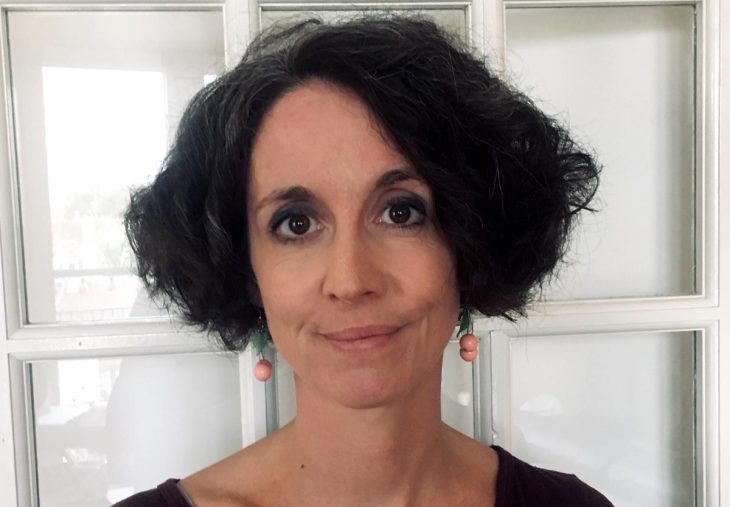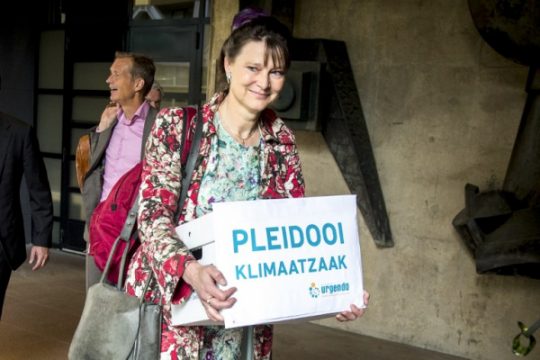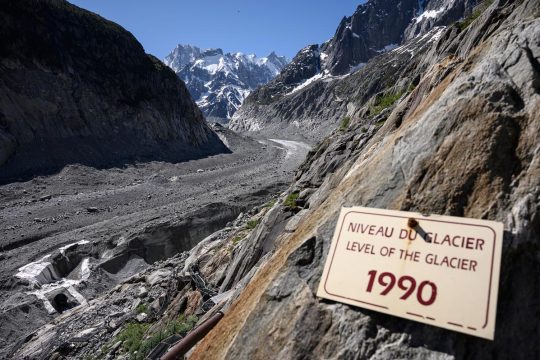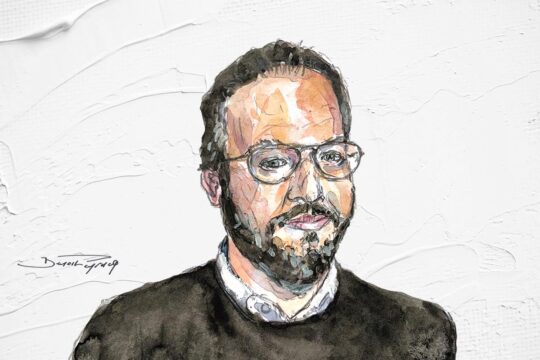JUSTICEINFO.NET IN-DEPTH INTERVIEWS
Christel Cournil
Professor of public law at Sciences Po Toulouse, co-author of “Les procès climatiques : entre le national et l’international” (2018).
Swedish activist Greta Thunberg filed a complaint at the UN on September 23 against five States, on grounds that their failure to act on the climate is an attack on child rights. This is the latest in a long series of litigation in various parts of the world since the mid-2000s aimed at forcing States and companies to reduce their carbon emissions, but there have been only a few judicial successes. Public law professor and climate specialist Christel Cournil takes a look at these efforts to change things on the judicial front.
JUSTICEINFO.NET: How did you become interested in these so-called climate actions?
CHRISTEL COURNIL: My first interest was in human rights. In the early 2000s, my thesis on public law focused on the influence of supranational norms on the law on foreigners. Its conclusion focused on the issue of people displaced by climate change, a phenomenon that was emerging at the time: some migrants from the Sahel who fled the drought and advance of the Sahara in the 1990s and some islanders from Oceania who, faced with rising waters, were claiming asylum in neighbouring States like New Zealand or Papua New Guinea were qualified as such. But the 1951 Geneva Convention relating to the Status of Refugees applies only to persons persecuted on grounds of their ethnic, social or political affiliation. There was therefore - and still is - a gap between the existing legal provisions and the actual need for legal protection of a new category of people. Particularly vulnerable to the effects of climate change, they seemed to me emblematic of the link that now needs to be established between environmental law and human rights. If we look at the long term, almost fifteen years later, climate-related judicial complaints invite us to think about this link. My involvement as legal adviser within the French association Notre affaire à tous - at the origin of a 2017 conference synthesized in the book “Les procès climatiques : entre le national et l'international” [Pédone, 2018], as well as the so-called "case of the century" in 2018 against the French State - has enabled me to move forward in this reflection.
In the mid-2000s, the first climate-related actions came from indigenous people.
When did the first climate-related complaints start?
We need to go back to the mid-2000s. The first climate-related actions came from indigenous people, another category of people particularly vulnerable to climate change and who see their lives as intrinsically linked to that of their environment. In 2005, a group of Inuit, noting the melting of the polar ice and its dramatic consequences on their way of life, filed a petition with the Inter-American Commission on Human Rights to have the right to the benefits of their culture, guaranteed by article 13 of the American Declaration of the Rights and Duties of Man, recognized. According to the petition, US greenhouse gas (GHG) emissions were the cause of Arctic environmental degradation that no longer allowed Inuit to enjoy their culture.
The petition developed a legal reasoning based on an interaction between international cultural law, international environmental law and international humanitarian law. The Inter-American Commission on Human Rights, which heard this group of Inuit, refused to rule, citing the difficulty of establishing the specific responsibility of US GHG emissions for the melting of Arctic ice.
Three years later, in February 2008, the indigenous community of the coastal village of Kivalina, northern Alaska, tried to bring ExxonMobil and 19 other oil and energy companies before the California courts for damage caused by flooding that had become frequent due to global warming: previously, sea ice protected the village from rising waters. But again, the judge deemed that he did not have sufficient elements to establish a causal link between the specific GHG emissions of these companies and the degradation of the environment in Kivalina. Even if the IPCC [Intergovernmental Panel on Climate Change] already considered in its fourth report of 2007 that human activity was "very likely" the cause of climate change, the question of legal attribution of responsibility for the global effects of climate change remained unresolved.
Although it does not directly affect a vulnerable category of the population, a third climate action of that time is worth mentioning: the 2005 action brought by the State of Massachusetts and eleven other states (as well as several major cities) in the United States against the Environmental Protection Agency (EPA). The complaining States considered that the EPA lacked ambition in its objectives to reduce national GHG emissions, thereby causing harm to public health, agricultural yields, biodiversity and human well-being. After appeal, the case was brought before the Supreme Court. In a landmark decision in 2007, the Court recognized the interest of complaint states in taking action to protect the population from the effects of climate change, but dismissed the complaint on the grounds of separation of powers: the law, and in particular US case law, are very strict in preventing judges from making political decisions, for example on reducing GHG emissions and climate, which fall within the jurisdiction of the legislative and executive branch.
Finally, these first generation climate actions have shown that legal action is possible by private persons who consider themselves victims of climate change or by public persons who intend to protect the population for whom they are responsible. But in the face of inevitably diffuse GHG emissions, this action has most often come up against two questions: that of the causal link between a specific GHG emission and localized climate damage, and that of the distribution of responsibility between the different GHG emitters.
The District Court in The Hague ordered the Dutch government to reduce its greenhouse gas emissions by at least 25% in 2020.
In June 2015, however, the Amsterdam-based NGO Urgenda won a decisive legal victory in the Netherlands. Why?
The first victory is that this NGO (i.e. a private legal entity), which advocates in its statutes the fight against climate change and action in favour of ecological transition, was recognized by the judge as having an interest to act, which is not the case for the 886 Dutch plaintiffs who supported it, physical persons not presenting, according to the judges, a particular vulnerability to climate change. Urgenda's appeal against the Dutch State was filed in 2012. It was the result of three years of work involving very detailed scientific documentation - reports from the IPCC and various Dutch and European public authorities - and based mainly on the notion of "duty of care", i.e. the obligation of the Dutch State to act to protect its population. At first instance in June 2015 - the IPCC's fifth report, which had just been published, then considered the human cause of climate change to be "extremely likely" - the District Court in The Hague ordered the Dutch government to reduce its greenhouse gas emissions by at least 25% in 2020 compared to their 1990 level, in accordance with the Netherlands' international commitments, in particular through its validation of successive IPCC reports. It did so by invoking an obligation of climate vigilance on the part of the State, an obligation based on domestic law in particular.
Articles 2 and 8 of the ECHR, which were not drafted on an environmental basis, are given a climate-linked interpretation.
It was only in October 2018, during the appeal judgment, that the judge clearly retained the question of human rights, in particular Articles 2 and 8 of the European Convention on Human Rights (ECHR), guaranteeing the right to life and respect for family life and home respectively, as a basis to confirm the judgment. By this judgment, which was confirmed on appeal, a State is recognized for the first time as having legal responsibility for climate change. Articles 2 and 8 of the ECHR, which were not drafted on an environmental basis, are given a climate-linked interpretation. And for the first time, the judiciary was taking precedence over the executive in climate matters.
This first victory before a national court was quickly followed by other successes. In September 2015, a modest Pakistani farmer, Asghar Leghari, won his lawsuit against the federal government and the State of Punjab in the Lahore High Court for "inaction, delay and lack of seriousness (...) in the implementation of the national climate change policy". Tired of seeing his crops ravaged by repeated bad weather and assisted by academics and lawyers, Leghari cited articles 9 and 14 of the Pakistani Constitution, guaranteeing respectively the right to life and human dignity, to claim a "violation [by the State] of fundamental constitutional rights". This simple farmer from a southern country, a new vulnerable figure emerging from the climate trials, won an order on the Pakistani government to initiate within six months an ambitious inter-ministerial policy on climate change mitigation and adaptation, with an obligation to monitor - even if, unlike in the Urgenda case, the quantified objectives remained the responsibility of the politicians.
This is a clever way of bringing the climate policies of States to the question of human rights, that is, to the highest standard of the international legal architecture.
People displaced by climate change, indigenous people, southern farmers… Are these the only vulnerable people emerging from climate trials?
Certainly not. Several actions have been brought by groups of people on the basis of their age. In 2016, a group of "Senior Women for Climate Protection" sued the Swiss Federal State for climate inaction on the grounds that their age makes them particularly vulnerable to the consequences of climate change. However, two years later, their application was rejected by the Federal Administrative Court. In contrast, in Colombia, a group of young people obtained significant progress from a national court in 2018 in the fight against deforestation, arguing that their age condemns them to live longer than others in threatening climatic conditions. Similarly, in the United States, young people are demanding that the judge recognize a constitutional right to a healthy environment. These Colombian and American complaints, which are much argued in terms of human rights, also open up innovative legal perspectives such as the guarantee of constitutional rights for future generations, the obligation for the State to ensure the safeguarding of a certain number of common rights or even the access of certain elements of the ecosystem to the status of "subject in law”.
The last of these youth-led climate actions was brought on 23 September by Swedish activist Greta Thunberg and fifteen other young people aged 8 to 17 before a quasi-judicial body: the UN committee of experts monitoring compliance with the International Convention on the Rights of the Child, adopted by the UN General Assembly in 1989. Coming from twelve countries, the plaintiffs are suing five G20 countries - France, Germany, Argentina, Brazil and Turkey - on the grounds that "these countries are among the most polluting and accelerate global warming". For these young people supported by UNICEF and clearly inspired by the case law of Urgenda, Leghari and Colombia, this is a clever way of bringing the climate policies of States to the question of human rights, that is, to the highest standard of the international legal architecture. The opinion to be given by the UN experts will certainly not be a judgment. But it may be used as a high-value reference by judges who will have to rule on climate appeals in the future.
Almost all international efforts have resulted in failed attempts or failures. The few cases that are beginning to be successful have almost always been brought before the national courts.
Judicial successes remain extremely rare. If you were a “vulnerable person” victim of the effects of climate change, which jurisdiction would you go to, to hope to win a case?
The history of climate lawsuits to date pleads in favour of an appeal to national courts. It can even be established that almost all international efforts have resulted in failed attempts or failures: failure of Tuvalu's appeal against the United States and Australia before the International Court of Justice in 2002, setbacks for African Union states after announcing a request for reparations from OECD states at COP15 in Copenhagen, failure of Inuit petitions in 2005 and 2013 before the Inter-American Commission on Human Rights, failure to date of the ten families that initiated the People's Climate Case in 2018 before the European Union Tribunal [on appeal]. On the other hand, the few cases that are beginning to be successful have almost always been brought before the national courts, whether in the Netherlands, Pakistan or Colombia. So much so that a transnational movement is emerging bringing together NGOs and lawyers to exchange best practices in bringing climate cases before national judges. With a guideline for all these second-generation, i.e. post-Urgenda, climate remedies: they try to link the issue of climate change to that of human rights.
Finally, these climate trials show that in legal matters as in many others, the climate is essential to us. Faced with the urgency of the danger, they invite us to rethink the systems of responsibility and in particular the question of its distribution, the interest in acting for oneself or for others, the systems of evidence with an increasingly thorough use of scientific expertise, the balances of democratic institutions where the executive is now pushed by the judiciary, and finally the field of fundamental rights. Can the right to life, the most important of all human rights, still be respected if it is not now supported by a right to a sustainable climate and a healthy environment?
Interviewed by Benjamin Bibas / La Fabrique documentaire.
 CHRISTEL COURNIL
CHRISTEL COURNIL
Professor of public law at Sciences Po Toulouse, Christel Cournil (see her publications) has conducted doctoral research on the impact of European asylum and immigration policy, the European Court of Human Rights and other human rights legislation on the law governing foreigners. From 2005 to 2006, she focused on natural resource management in Africa. Since 2008, she has been working on environmental migration, environmental law and now on its use by civil society. In 2018, she co-led with Leandro Varison “Les procès climatiques: entre le national et l'international” (Pédone, Paris), largely consisting of papers from the first international conference on climate litigation, which was held in 2017 in Paris.









